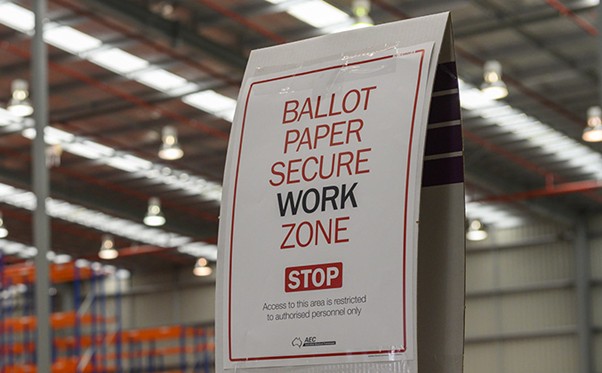In the latest data from the Australian Electoral Commission, Liberal Zoe McKenzie has the edge over the other two contenders, Labor’s Sarah Race and independent Ben Smith, topping 50% of the votes. The updated data comes as the AEC works through a “complex count scenario” involving a three-candidate-preferred (3CP) count as opposed to a traditional two-candidate-preferred (2CP) count.
Current results in the 3CP count are:
Zoe McKenzie (Liberal): 17,115 votes (50.3% of 3CP)
Sarah Race (Labor): 8670 (25.48% of 3CP)
Ben Smith (Independent): 8244 votes (24.23% of 3CP)
The latest results see Race stretch her lead over Smith to 426 votes, after being just five votes ahead earlier in the day.
Once the second candidate in the 2CP contest is determined, the votes from the eliminated candidate will be reallocated according to preferences. Critically, if McKenzie stays above 50% of the vote during the rest of the 3CP contest, she will clinch the seat.
The Australian Electoral Commission has confirmed that the electorate of Flinders is being worked through as a “complex count scenario” involving a three-candidate-preferred (3CP) count as opposed to a traditional two-candidate-preferred (2CP) count. The process is slow, and it could take more than a week to determine the eventual winner in Flinders.
Usually elections are fairly straight forward. To streamline the process (mostly for the satisfaction of the television viewer at home) the AEC pre-determines who they believe will be the two highest polling candidates. They then provide data of the indicative 2CP results to keep people well informed of the likely outcome as quickly as possible.
In Flinders, there was a problem. McKenzie and Race were selected by the AEC as the 2CP candidates, but during the night a third candidate, Smith, was polling higher than Race. This caused the AEC to abandon its 2CP reporting for McKenzie and Race.
Now there was a strong polling first candidate in McKenzie, and a neck-and-neck scenario for second between Smith and Race.
The solution, although time consuming, is instead of running the planned 2CP contest, the AEC runs a 3CP contest. And that is what is being undertaken in the electorate of Flinders.
The process involves sorting votes into piles for three candidates instead of two.
Like the 2CP count, ballot papers go into the pile based on who received the highest preference. In practice, this means we set aside ballot papers with first preferences for the three leading candidates, then the AEC takes the ballot papers with first preferences for the remaining candidates and allocate each ballot paper to one of the three leading candidates based on the second preference on that ballot paper (or the next preference available for one of the three candidates). Then they tally up how many votes each of the three candidates have to understand who the likely winner will be, and who the top two candidates will be.
Once the two leading candidates are determined the legislated 2CP count will be conducted, which as always is followed by the full distribution of preferences.
This scenario occurred for two seats in the 2022 federal election; Brisbane (Queensland) and Macnamara (Victoria). In Brisbane the scenario was very similar to what we now see in Flinders. One candidate received 37 per cent of the primary votes, however the next two candidates received an almost identical number of primary votes – their totals only differed by 11 votes. A 3CP count was required to determine which of the other two would be excluded from the count first, with that candidate’s votes then being distributed into a traditional 2CP count.
In the 2025 election, the 3CP process is currently being undertaken for ten seats.



